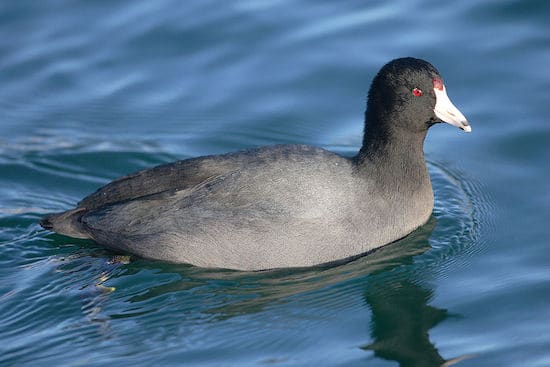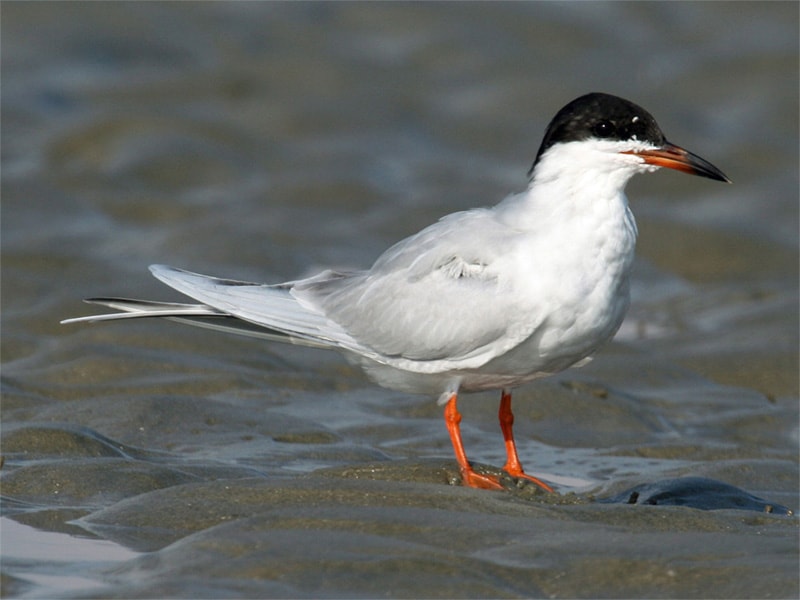Look For
The reddish egret comes in two colors: white or grayish blue. The white morph (or variation) is white with a bicolored bill that is pink, tipped with black. It is much scarcer than the dark morph, which is grayish blue with reddish feathers on its head and neck; it also has a bicolored bill. Compared to other herons, the reddish egret is plumper for its size.
Listen For
While they are mostly silent, their most common vocalization sounds like awwh-uhhh awwh-UNH awwwh-UNH-UNH!
Find It
The reddish egret is almost exclusively an inhabitant of coastal lagoons of the Gulf Coast states and is perhaps North America’s least known heron. The Florida Keys is a very constant residence of the reddish egret. If any bird can be said to lack a sense of propriety, then it is the reddish egret—the clown that does the tangled-footed two-step in the shallows. Other herons and egrets have a certain dignity, but the “big red” lets it all hang out. It makes long-legged dashes through the shallows, its body listing first to port and then to starboard.
Feeding Behavior
It rarely feeds from the edges of the water but instead resorts to the extensive mud or sand flats or lagoons that are so numerous in the Keys. It raises its wings like a sail to cast shade on its intended prey, leaps into the air like a ballet dancer, and finally lunges at the would-be meal with quick stabbing motions. It is hit or miss, but—either way—it is only minutes before the show begins again. It is the most varied and active of any North American heron in foraging techniques. They primarily eat small fish and the occasional frog or tadpole.
Nesting Behavior
Reddish egrets usually nest in mixed-species heron colonies and their nest locations can be on the ground, in vegetation, or in trees up to 10 meters above ground. Nests are well made from dry sticks and lined with forbs and grasses. On average, they have three to four eggs per clutch and incubate them for about a month. Young leave the nest in four to five weeks but remain close to the nest.





https://uploads.disquscdn.com/images/fb6835343c6b485b0f03268e3b93223b8bf33b91dd4bd1890db730339792cba6.jpg
I took this photo at Bolsa Chica Ecological Reseve on June 9,2017
can any one confirm if it is Reddish Egret
Pretty sure it is. There’s some possibility that it could be a juvenile tricolored heron. Would like to see the front of its neck (white in the juvie tricolored, solid red in reddish). Reddish egret is more likely at that location. Aren’t they cool birds? Dawn, Bird Watcher’s Digest
Thank for confirming and the neck is sold red
Sent from my iPad
Dr. Galal El-Sayad
Amale international
129 Brown Rd
Ten Mile TN 37880
Phone: 865-717-6246
Email : amale@ amale.com
Website: http://www.amale.com
Hi every one
I am new with birds, I need help to identify this bird I posted